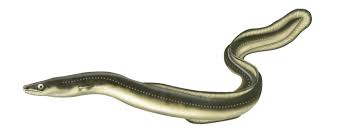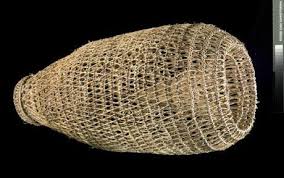I am a student at Bay of Islands College in Kawakawa, New Zealand. This is a place where I share my learning.
Friday, 8 December 2017
Friday, 27 October 2017
Wednesday, 25 October 2017
Friday, 20 October 2017
WEEKLY PLENARY
This is my weekly plenary it is what you need help on,what you did good at and what your teacher can help you with.
Friday, 22 September 2017
MOVIE
Movie Questions
What was hard about my movie?
The hard part was learning the lines and getting some of the people to say their lines on camera.
What was the part that you liked about you movie?
The thing I liked was arting in the movie.
What would I do different next time?
I would make it longer and make it have more have people in the movie and change to a game movie.
What wasn’t good and why it didn’t work?
The thing that didn’t work was using all of the people in the movie and getting them to arte.
Friday, 11 August 2017
Friday, 4 August 2017
Writing
In my class we have be learning how to write a explanation.
Life cycle of a Cicada
Life cycle of a Cicada
Have you ever wonder about the Cicada's life cycle?
Firstly The 13- or 17-year life cycle of a periodical cicada begins when an adult female cicada lays her eggs in slits she cuts in the twigs and branches of trees.
The world's largest species of cicada is the Mega Pomponia imperatoria, which is native to Malaysia. The largest species in North America is Neo Tibicen auletes, aka the Northern Dusk Singing Cicada.
We have talked about a cicada's life cycle and how it is like, from when they are eggs and and when the turn into a adult.
Friday, 28 July 2017
James's Reading
This week in my reading group we have been learning how to use inferences and answer inferences.
Inferences Worksheet 1
Inferences Worksheet 1
Directions: Read each passage and then respond to the questions. Each question will ask you to make a logical inference based on textual details. Explain your answer by referencing the text.
Every day after work Paul took his muddy boots off on the steps of the front porch. Alice would have a fit if the boots made it so far as the welcome mat. He then took off his dusty overalls and threw them into a plastic garbage bag; Alice left a new garbage bag tied to the porch railing for him every morning. On his way in the house, he dropped the garbage bag off at the washing machine and went straight up the stairs to the shower as he was instructed. He would eat dinner with her after he was “presentable,” as Alice had often said.
1. What type of job does Paul do? _He is a farmer ___________________________________________________
How do you know this? He has a job is a farm,I know this because hee has muddy boots.
|
2. Describe Alice: ___________________________________________________________________
What in the text supports your description? I know that is his wife because she set the table when he get home.bossy and a clean person.
|
3. What relationship do Paul and Alice have? Brother and sister _____________________________________________
Why do you feel this way? Because she looks after him.
|
Tuesday, 27 June 2017
MY TUNA REPORT
TUNA REPORT
Opening statement.
The Eel’s scientific name is Anguilliformes but in maori it is called a Tuna. There are two main types of eels one is longfin and shortfin. Eels are known to be freshwater wish and the loses of eels is coz by wetlands.
Appearance
When eels a little babys they are only a millimetre in length and as they grow up the eels can grow up to two metres long.Eels have smooth heads but when eels grow up their heads become bulbous (fat and round or bulging). Eels have scales and fins. The longfin eels have colored eyes that can be dark brown or grey black eye color. As eels grow up their head become more slender and tapered almost bullet like.
Breeding
When longfin eels are ready to breed the longfin leave New Zealand and then they swim all the way to the subtropical pacific ocean to breed. Once the longfin eels breed that's the only time they can then die. The female longfin eel lay millions of eggs and then die but the baby eels swim in the sea and then they find its way back home.
Diet
The longfin eels can feed on insects,larvae,worms and water snails but as they grow up and get bigger they start feeding on bigger fish,freshwater crayfish,even small birds and ducklings.
Habitat
Longfin eels can be found all thought New Zealand and in lakes,creeks,rivers and islands from the cost and you can find baby eels that have come from the pacific ocean try to swim up streams or up water falls.
Closing statement
Longfin eels can live up to 25 to 80 years old until they breed then die but the shortfin eels live up to 15 to 18 years and people should not eat longfin eels because they are toxic inside of them.There are a big loss of longfin eels because it is from the big loss of wetlands.
MY HINAKI
HINAKI REPORT
Opening Statement
A hinaki is an old type of maori Eel/Tuna trap that was used back when there was no cars or Technology that we have now.Hinaki was mainly used to trap Eel/Tuna inside and it was used to feed their family.
When to use the hinaki
A hinaki is to be used at night because all the Eel/Tuna come out and hunt for it’s prey.When you put the hinaki in the creek or river make sure it faces down steam not up steam.So the Eel/Tuna can seem the bait when it goes down steam.
Types of Hinaki
A large type of hinaki, called hinaki tarino, was used in the Waikato River and its tributaries.
The hinaki waharua had an entrance at each end – waharua means ‘two mouths’.They were set in deep rivers or in lagoons. Temporary waharua were sometimes made of flax leaves and used in the Manawatu River.Neither of these were used with eel weirs. 
How to make hinaki.
Hinaki is handmade you weave it with flax it is handmade from our ancestors and then brought down to us.The best Hinaki was a work of art.A normal Hinaki was called Hinaki tukutuku and it only had one entrance.
Bait you should use
Hinaki were used with bait – often worms, or even birds. Bait was put in a small pot called a pu toke, which looked like a miniature hinaki, or a small flax bag called a torehe. At other times it was tied inside the hinaki. The Ngati Porou people would thread earthworms on a string and tie them to a piece of flax flower stalk, which floated inside the trap.
Hīnaki at eel weirs were used without bait.
Closing statement
Hinaki are meant to catch eels because it is a eel trap but really some people just put it on the wall to make it art and other people use it for hang up for a light shade.
Friday, 12 May 2017
Wednesday, 5 April 2017
Friday, 17 March 2017
Friday, 10 March 2017
RUBBISH BINS
We should get our rubbish bins back.
I strongly agree that we should have the rubbish bins back because kawakawa primary school is become a big rubbish bin.
Firstly our school is getting messe than it was and our bags are becoming a mess and all the rubbish that we have is getting put in weird places.
Secondly most of the rubbish is falling out of our pockets and are ending up downtown,across the road and down bottom.
Finally all the rubbish in our bags stink it out and then our parents are going to will throw our bags away and then the school will get dirtier.
Subscribe to:
Comments (Atom)